 Technology peripherals
Technology peripherals
 AI
AI
 Google releases the latest 'screen reading' AI! PaLM 2-S automatically generates data, and multiple understanding tasks refresh SOTA
Google releases the latest 'screen reading' AI! PaLM 2-S automatically generates data, and multiple understanding tasks refresh SOTA
Google releases the latest 'screen reading' AI! PaLM 2-S automatically generates data, and multiple understanding tasks refresh SOTA
The big model that everyone wants is the kind that is truly intelligent...
The Google team will make it Developed a powerful "screen reading" AI.
The researchers call it ScreenAI, a new visual language model for understanding user interfaces and infographics.

Paper address: https://arxiv.org/pdf/2402.04615.pdf
ScreenAI At its core is a new screenshot text representation method that recognizes the type and position of UI elements.
The researchers used the Google language model PaLM 2-S to generate synthetic training data, which was used to train the model to answer questions related to screen information, screen navigation, and screen content summaries. question. It is worth mentioning that this method provides new ideas for improving the performance of the model when handling screen-related tasks.

For example, if you open a music APP page, you can ask "How many songs are less than 30 seconds long?"
ScreenAI gave a simple answer: 1.
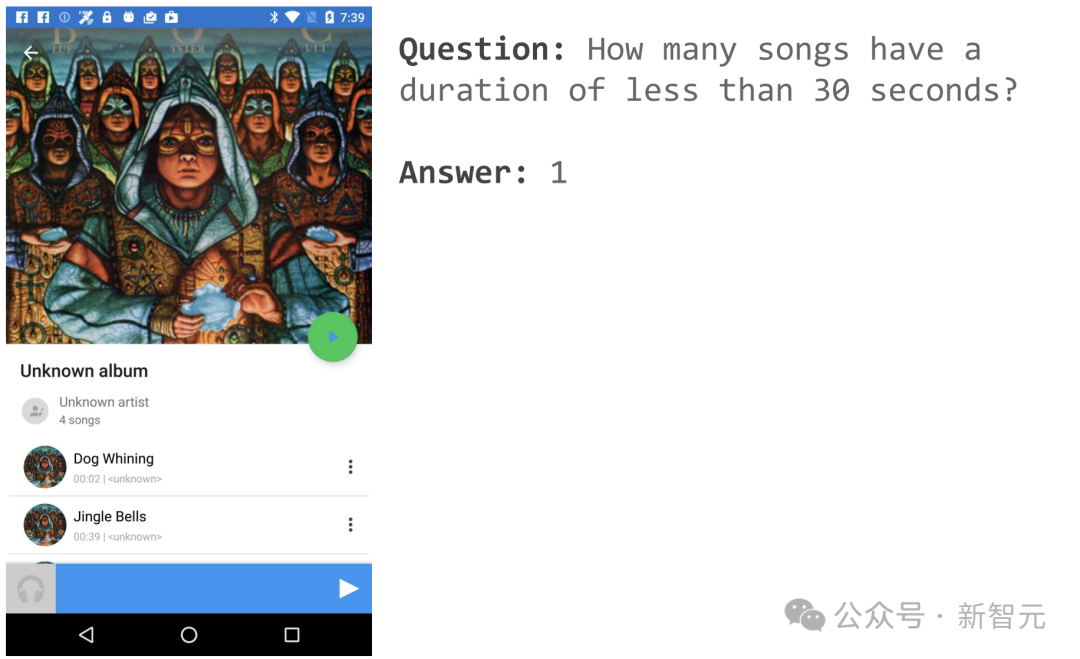
Another example is to command ScreenAI to open the menu and you can select it.
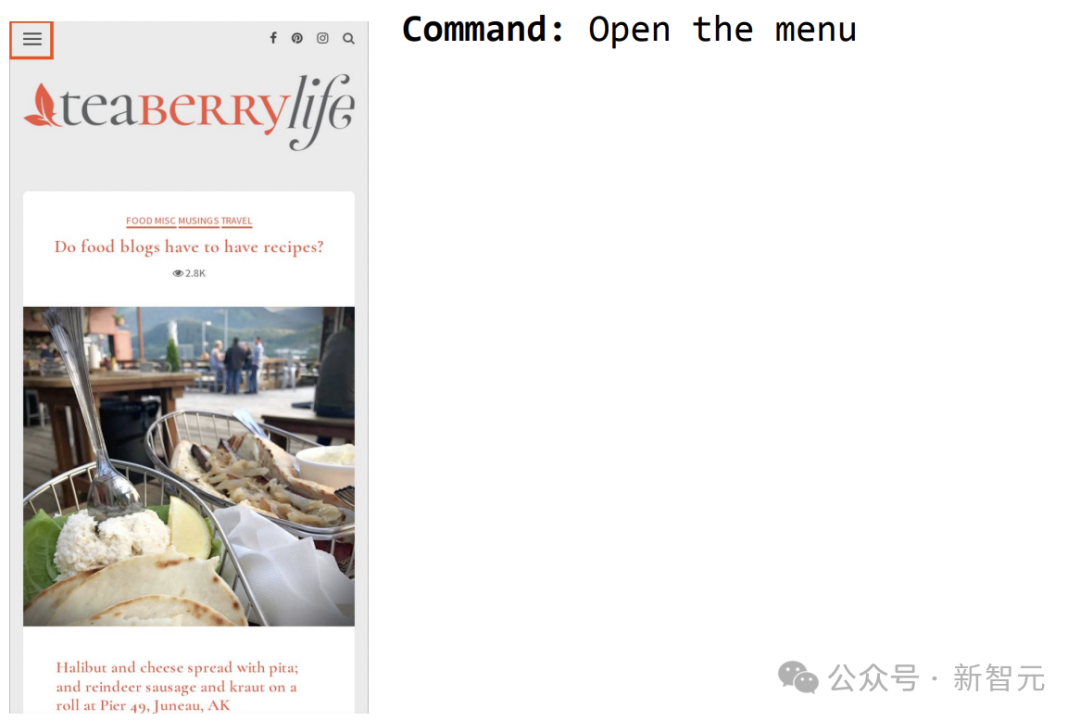
Source of architectural inspiration - PaLI
Figure 1 shows the ScreenAI model architecture. The researchers were inspired by the architecture of the PaLI family of models, which consists of a multimodal encoder block.
The encoder block contains a ViT-like visual encoder and an mT5 language encoder consuming image and text input, followed by an autoregressive decoder.
The input image is converted by the visual encoder into a series of embeddings, which are combined with the input text embedding and fed into the mT5 language encoder.
The output of the encoder is passed to the decoder, which produces text output.
This generalized formulation can use the same model architecture to solve various visual and multi-modal tasks. These tasks can be reformulated as text-image (input) to text (output) problems.
Compared to text input, image embeddings form a significant part of the input length to multi-modal encoders.
In short, this model uses an image encoder and a language encoder to extract image and text features, fuse the two and then input them into the decoder to generate text.
This construction method can be widely applied to multi-modal tasks such as image understanding.
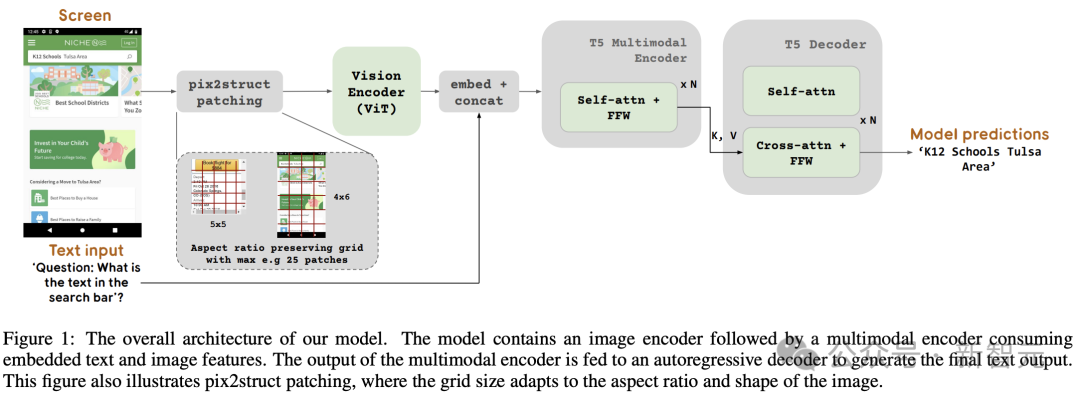
In addition, the researchers further extended PaLI’s encoder-decoder architecture to accept various image blocking modes.
The original PaLI architecture only accepts image patches in a fixed grid pattern to process input images. However, researchers in the screen-related field encounter data that spans a wide variety of resolutions and aspect ratios.
In order for a single model to adapt to all screen shapes, it is necessary to use a tiling strategy that works for images of various shapes.
To this end, the Google team borrowed a technology introduced in Pix2Struct, which allows the generation of arbitrary grid-shaped image blocks based on the input image shape and a predefined maximum number of blocks, such as As shown in Figure 1.
This is able to adapt to input images of various formats and aspect ratios without padding or stretching the image to fix its shape, making the model more versatile and able to handle movement simultaneously Image formats for device (i.e. portrait) and desktop (i.e. landscape).
Model configuration
The researchers trained 3 models of different sizes, containing 670M, 2B and 5B parameters.
For the 670M and 2B parameter models, the researchers started with pre-trained unimodal checkpoints for the visual encoder and encoder-decoder language model.
For the 5B parameter model, start from the multi-modal pre-training checkpoint of PaLI-3, where ViT is trained with a UL2-based encoder-decoder language model.
The parameter distribution between the visual and language models can be seen in Table 1.
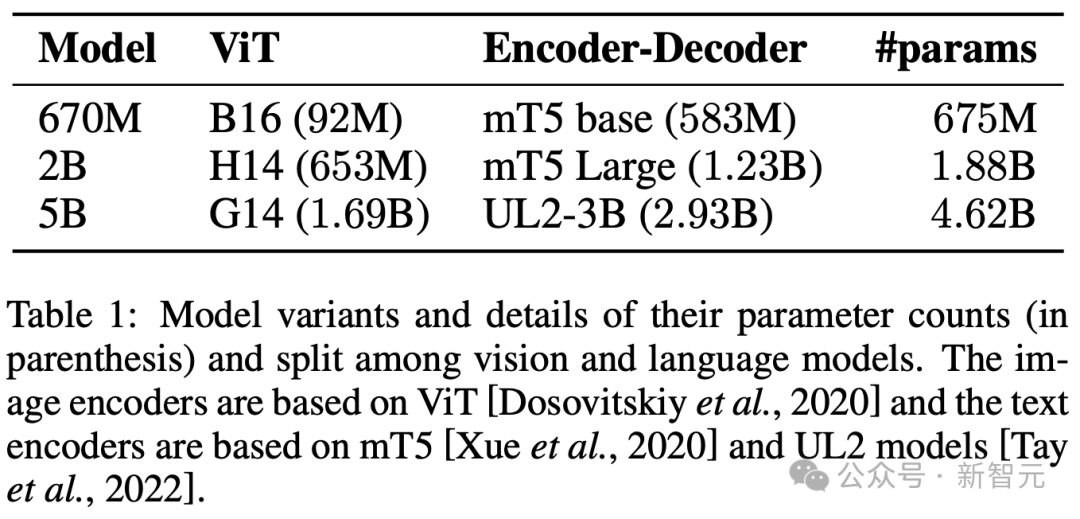
Automatic data generation
Researchers say that pre-production of model development The training phase largely depends on access to large and diverse data sets.
However, manually labeling extensive data sets is impractical, so the Google team’s strategy is to automatically generate data.
This approach leverages specialized small models, each of which is good at generating and labeling data efficiently and with high accuracy.
Compared to manual annotation, this automated approach is not only efficient and scalable, but also ensures a certain level of data diversity and complexity.
The first step is to give the model a comprehensive understanding of text elements, various screen components, and their overall structure and hierarchy. This fundamental understanding is critical to the model's ability to accurately interpret and interact with a variety of user interfaces.
Here, researchers collected a large number of screenshots from a variety of devices, including desktops, mobile devices, and tablets, by crawling applications and web pages.
These screenshots are then annotated with detailed tags that describe the UI elements, their spatial relationships, and other descriptive information.
In addition, to inject greater diversity into the pre-training data, the researchers also leveraged the power of language models, specifically PaLM 2-S, to generate QA pairs in two stages.
Start by generating the screen mode described previously. The authors then design a prompt containing screen patterns to guide the language model to generate synthetic data.
After a few iterations, a tip can be identified that effectively generates the required tasks, as shown in Appendix C.
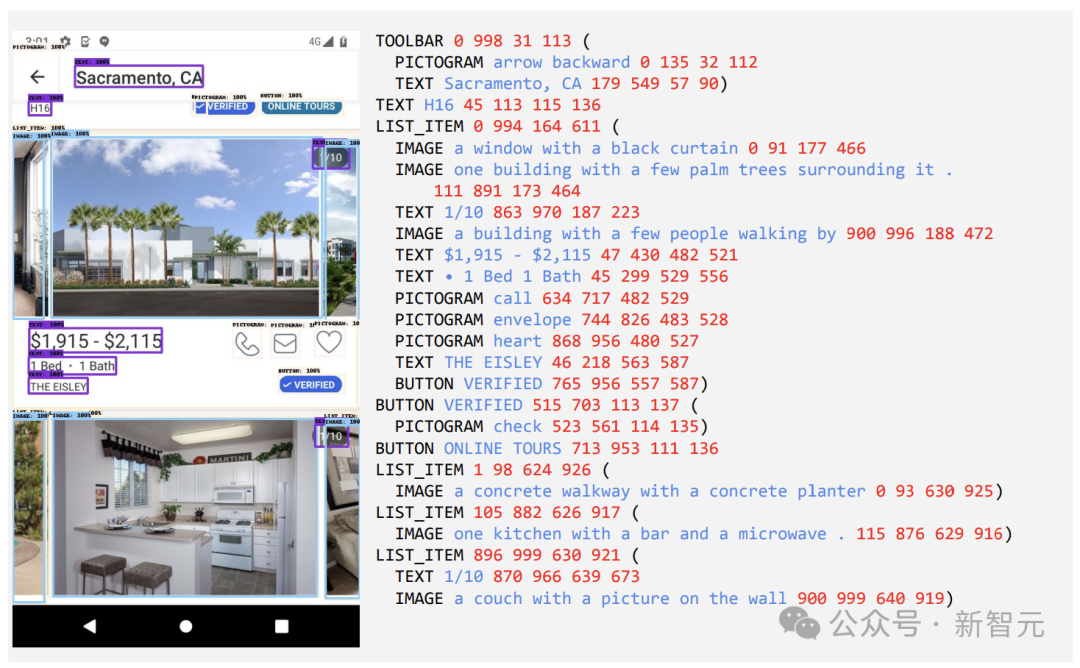
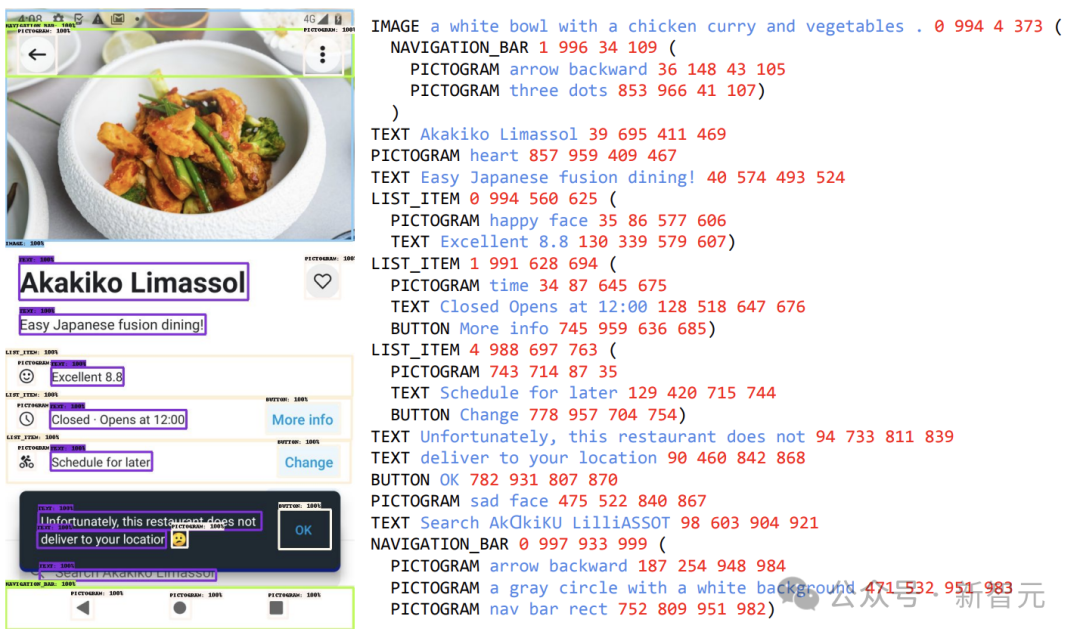
#To assess the quality of these generated responses, the researchers performed manual verification on a subset of the data , to ensure that the predetermined quality requirements are met.
This method is described in Figure 2, which greatly improves the depth and breadth of the pre-training data set.
By leveraging the natural language processing capabilities of these models, combined with structured screen patterns, various user interactions and scenarios can be simulated.

Two sets of different tasks
Next, the researchers defined two different sets of tasks for the model Tasks: an initial set of pre-training tasks and a subsequent set of fine-tuning tasks.
The difference between these two groups mainly lies in two aspects:
- Source of real data: For fine-tuning tasks, labels are evaluated by human evaluators Provide or verify. For pre-training tasks, labels are inferred using self-supervised learning methods or generated using other models.
- Size of the dataset: Usually pre-training tasks contain a large number of samples, therefore, these tasks are used to train the model through a more extended series of steps.
Table 2 shows a summary of all pre-training tasks.
In mixed data, the dataset is weighted proportionally to its size, with the maximum weight allowed for each task.

Incorporate multi-modal sources into multi-task training, from language processing to visual understanding and web page content analysis, enabling the model to effectively handle different scenarios and enhancing its overall Versatility and performance.
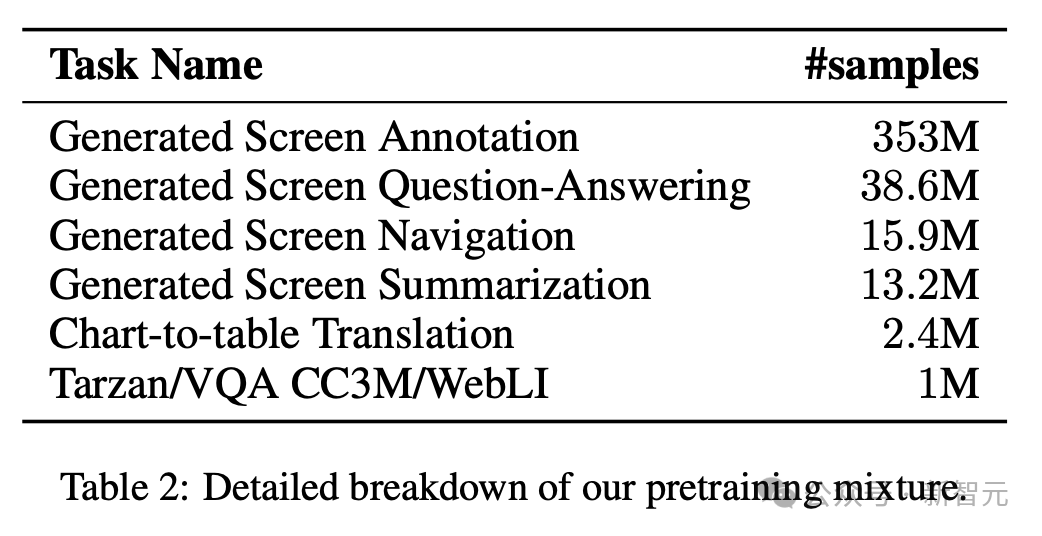
Researchers use various tasks and benchmarks to estimate the quality of the model during fine-tuning. Table 3 summarizes these benchmarks, including existing primary screen, infographic, and document comprehension benchmarks.
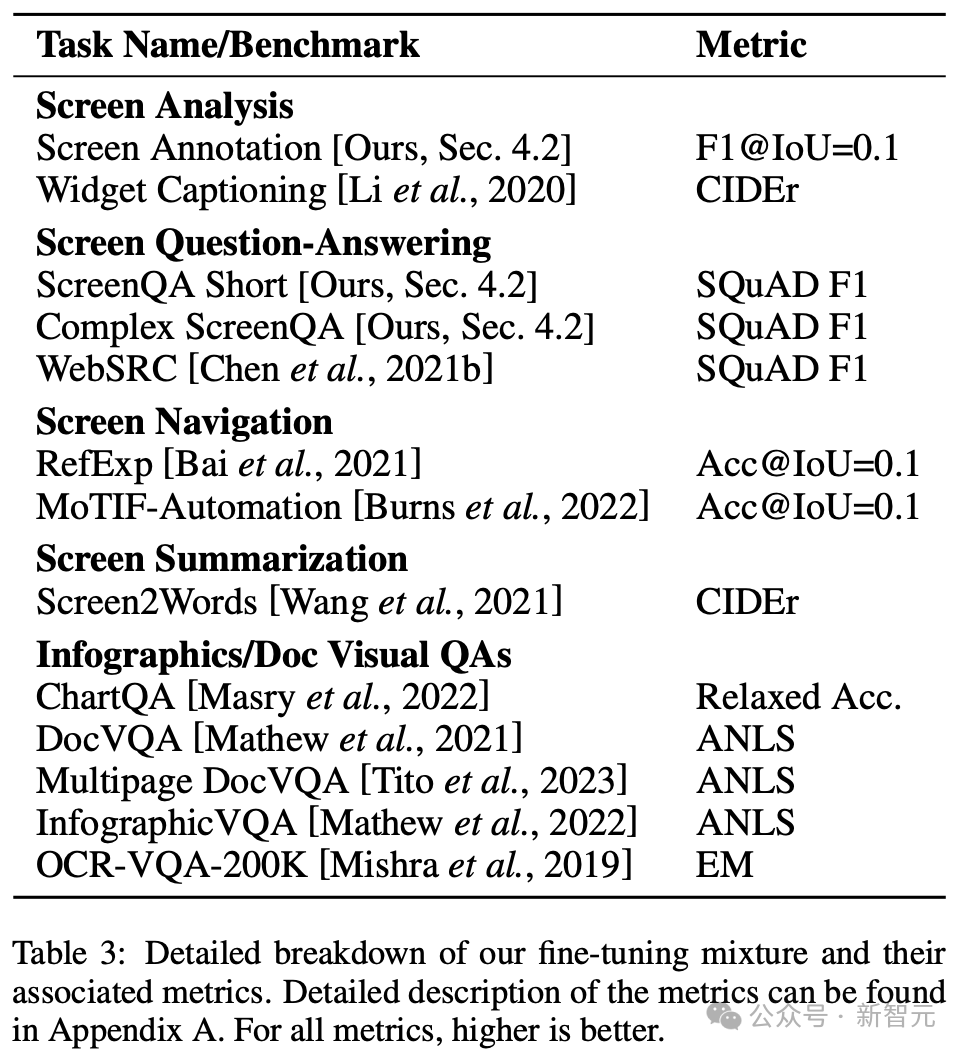
Experimental results
Figure 4 shows the performance of the ScreenAI model and compares it with various The latest SOT results on screen and infographic related tasks are compared.
You can see that ScreenAI has achieved leading performance on different tasks.
In Table 4, the researchers present the results of single-task fine-tuning using OCR data.
For QA tasks, adding OCR can improve performance (e.g. up to 4.5% on Complex ScreenQA, MPDocVQA and InfoVQA).
However, using OCR slightly increases the input length, resulting in slower overall training. It also requires obtaining OCR results at inference time.
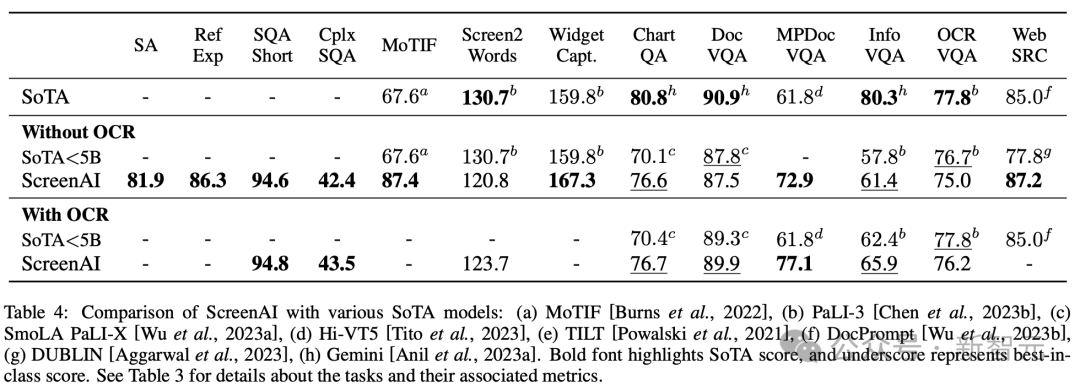
Additionally, the researchers conducted single-task experiments using the following model sizes: 670 million parameters, 2 billion parameters, and 5 billion parameters.
It can be observed in Figure 4 that for all tasks, increasing the model size improves performance, and the improvement at the largest scale has not yet saturated.
For tasks requiring more complex visual text and arithmetic reasoning (such as InfoVQA, ChartQA, and Complex ScreenQA), the improvement between the 2 billion parameter model and the 5 billion parameter model is significantly greater than 6.7 100 million parameter model and 2 billion parameter model.

Finally, Figure 5 shows that for images with aspect ratio >1.0 (landscape mode images), the pix2struct segmentation strategy is significantly better than fixed Grid segmentation.
For portrait mode images, the trend is opposite, but fixed grid segmentation is only slightly better.
Given that the researchers wanted the ScreenAI model to work on images with different aspect ratios, they chose to use the pix2struct segmentation strategy.
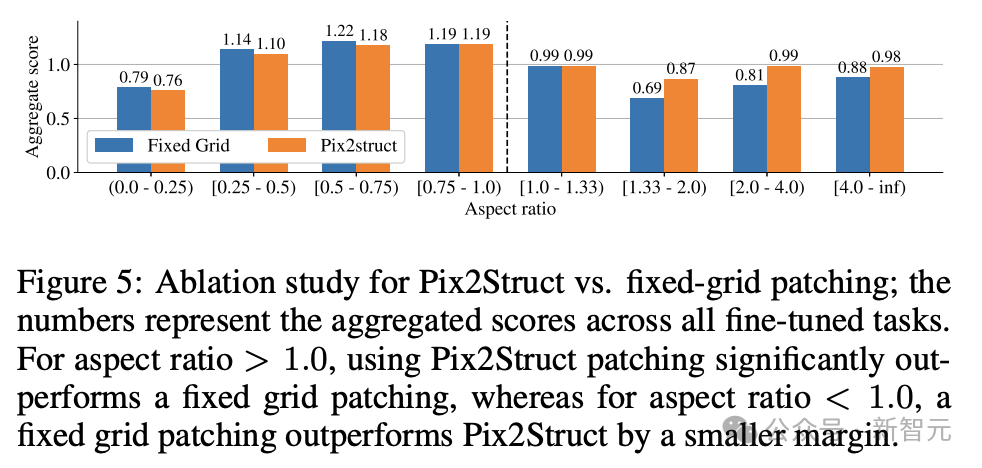
Google researchers said the ScreenAI model also needs more research on some tasks to scale down to larger models such as GPT-4 and Gemini. model gap.
The above is the detailed content of Google releases the latest 'screen reading' AI! PaLM 2-S automatically generates data, and multiple understanding tasks refresh SOTA. For more information, please follow other related articles on the PHP Chinese website!

Hot AI Tools

Undresser.AI Undress
AI-powered app for creating realistic nude photos

AI Clothes Remover
Online AI tool for removing clothes from photos.

Undress AI Tool
Undress images for free

Clothoff.io
AI clothes remover

Video Face Swap
Swap faces in any video effortlessly with our completely free AI face swap tool!

Hot Article

Hot Tools

Notepad++7.3.1
Easy-to-use and free code editor

SublimeText3 Chinese version
Chinese version, very easy to use

Zend Studio 13.0.1
Powerful PHP integrated development environment

Dreamweaver CS6
Visual web development tools

SublimeText3 Mac version
God-level code editing software (SublimeText3)

Hot Topics
 1675
1675
 14
14
 1429
1429
 52
52
 1333
1333
 25
25
 1278
1278
 29
29
 1257
1257
 24
24
 How to set, get and delete WordPress cookies (like a professional)
May 12, 2025 pm 08:57 PM
How to set, get and delete WordPress cookies (like a professional)
May 12, 2025 pm 08:57 PM
Do you want to know how to use cookies on your WordPress website? Cookies are useful tools for storing temporary information in users’ browsers. You can use this information to enhance the user experience through personalization and behavioral targeting. In this ultimate guide, we will show you how to set, get, and delete WordPresscookies like a professional. Note: This is an advanced tutorial. It requires you to be proficient in HTML, CSS, WordPress websites and PHP. What are cookies? Cookies are created and stored when users visit websites.
 2025 Huobi APKV10.50.0 Download Guide How to Download
May 12, 2025 pm 08:48 PM
2025 Huobi APKV10.50.0 Download Guide How to Download
May 12, 2025 pm 08:48 PM
Huobi APKV10.50.0 download guide: 1. Click the direct link in the article; 2. Select the correct download package; 3. Fill in the registration information; 4. Start the Huobi trading process.
 2025 Huobi APKV10.50.0 download address
May 12, 2025 pm 08:42 PM
2025 Huobi APKV10.50.0 download address
May 12, 2025 pm 08:42 PM
Huobi APKV10.50.0 download guide: 1. Click the direct link in the article; 2. Select the correct download package; 3. Fill in the registration information; 4. Start the Huobi trading process.
 2025 Huobi APKV10.50.0 installation method APK guide
May 12, 2025 pm 08:27 PM
2025 Huobi APKV10.50.0 installation method APK guide
May 12, 2025 pm 08:27 PM
Huobi APKV10.50.0 download guide: 1. Click the direct link in the article; 2. Select the correct download package; 3. Fill in the registration information; 4. Start the Huobi trading process.
 2025 Huobi APKV10.50.0 download website
May 12, 2025 pm 08:39 PM
2025 Huobi APKV10.50.0 download website
May 12, 2025 pm 08:39 PM
Huobi APKV10.50.0 download guide: 1. Click the direct link in the article; 2. Select the correct download package; 3. Fill in the registration information; 4. Start the Huobi trading process.
 Top 10 Virtual Currency Exchange Apps Rankings in 2025, Top 10 latest rankings of digital currency trading apps
May 12, 2025 pm 08:18 PM
Top 10 Virtual Currency Exchange Apps Rankings in 2025, Top 10 latest rankings of digital currency trading apps
May 12, 2025 pm 08:18 PM
The top ten virtual currency exchange apps in 2025 are ranked as follows: 1. OKX, 2. Binance, 3. Huobi, 4. Coinbase, 5. Kraken, 6. KuCoin, 7. Bybit, 8. FTX, 9. Bitfinex, 10. Gate.io. These exchanges are selected based on dimensions such as user experience, security and transaction volume. Each platform provides unique functions and services to meet the needs of different users.
 The latest ranking of the top ten digital currency exchange apps Recommended the top ten digital currency exchange apps
May 12, 2025 pm 08:15 PM
The latest ranking of the top ten digital currency exchange apps Recommended the top ten digital currency exchange apps
May 12, 2025 pm 08:15 PM
The latest rankings of the top ten digital currency exchange apps are: 1. OKX, 2. Binance, 3. Huobi, 4. Coinbase, 5. Kraken, 6. KuCoin, 7. Bitfinex, 8. Gemini, 9. Bitstamp, 10. Poloniex. The steps to using these apps include: downloading and installing the app, registering an account, completing KYC certification, top-up and starting a transaction.
 Recommended currency circle trading apps, the latest ranking of the top ten digital currency exchange apps
May 12, 2025 pm 06:54 PM
Recommended currency circle trading apps, the latest ranking of the top ten digital currency exchange apps
May 12, 2025 pm 06:54 PM
Recommended currency trading apps: 1. OKX, 2. Binance, 3. Huobi, 4. Coinbase, 5. Kraken, 6. Bitfinex, 7. KuCoin, 8. Gemini, 9. Bitstamp, 10. Poloniex, these platforms have their own characteristics and meet different user needs.



